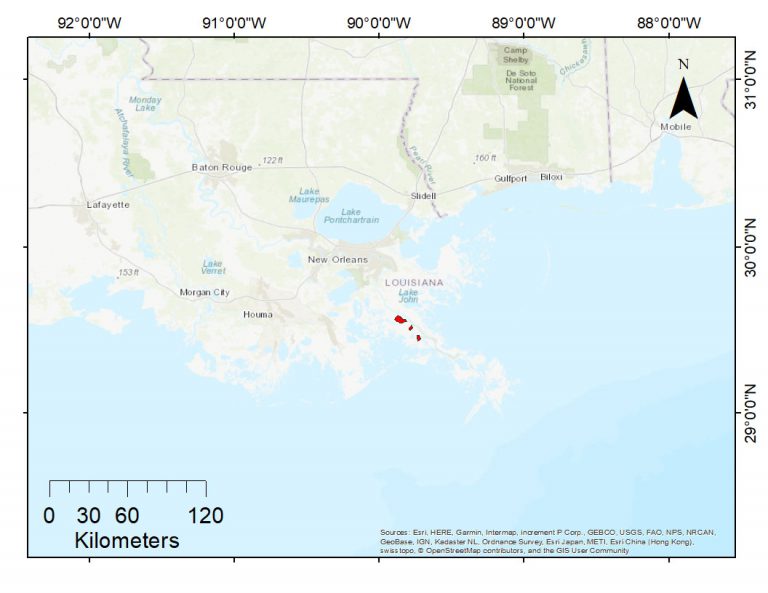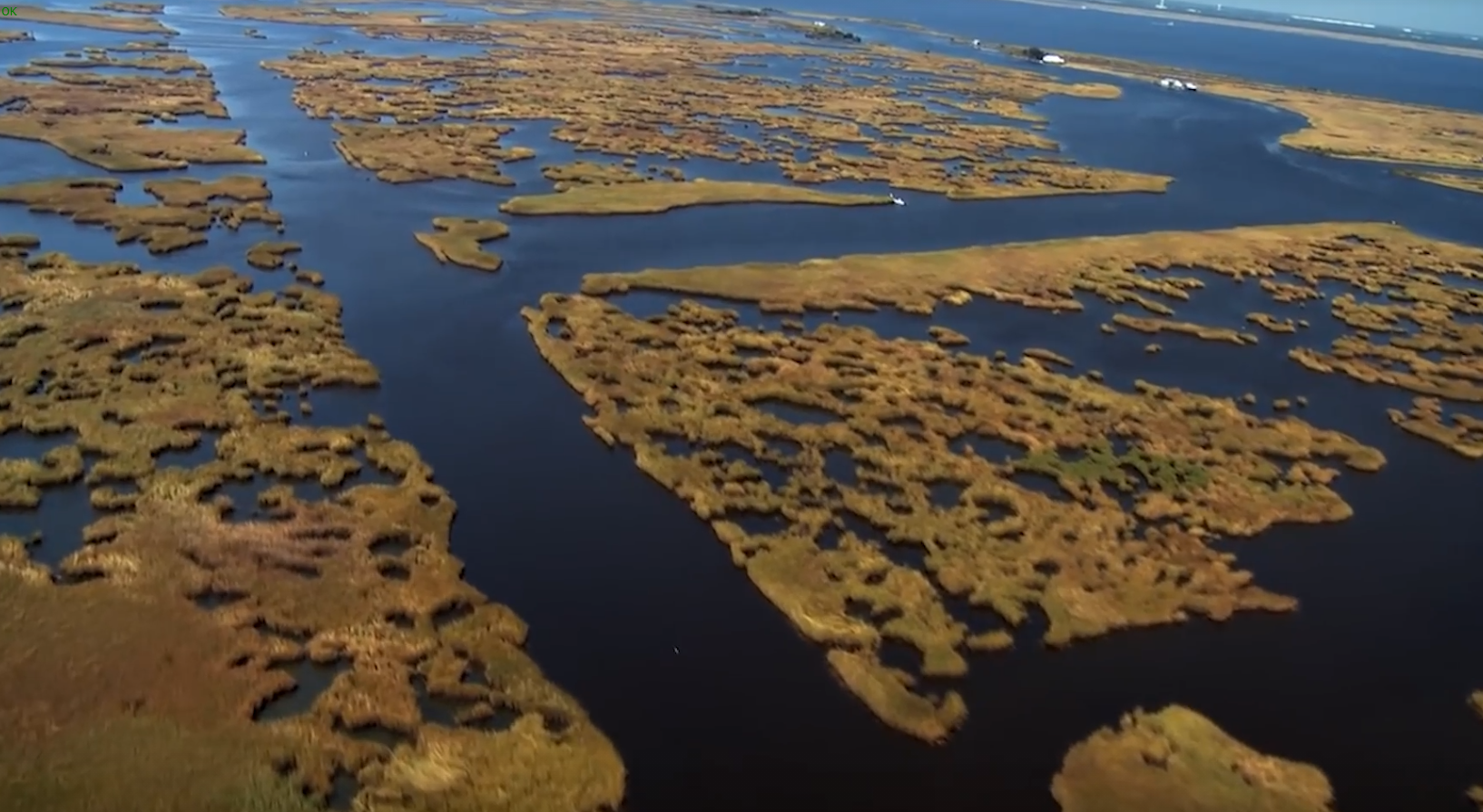Full Title: Linking community and food-web approaches to restoration: An ecological assessment of created and natural marshes influenced by river diversions
This project investigated how river diversions influence the living communities, food web structure, and function of created versus natural marshes to inform the development of marsh restoration strategies.
Learn more about this project on their website.
This video provides an overview of Dr. Polito’s project.
The Team: Michael J. Polito (Lead Investigator, Louisiana State University, mpolito@lsu.edu), Annette S. Engel (University of Tennessee-Knoxville), Linda M. Hooper-Bui (Louisiana State University), Olaf P. Jenson (Rutgers University), Paola Lopez-Duarte (Rutgers University), Charles W. Martin (University of Florida), Jill A. Olin (Michigan Technological University), Nancy N. Rabalais (Louisiana Universities Marine Consortium and Louisiana State University), Brian J. Roberts (Louisiana Universities Marine Consortium), and Erick Swenson (Louisiana State University)
Technical Monitors: Melissa Carle (melissa.carle@noaa.gov) and Ian Zink (ian.zink@noaa.gov)
Federal Program Officer/Point of Contact: Frank Parker (frank.parker@noaa.gov)
This project began in June 2017 and will end November 30, 2023.
Award Amount: $2,057,684
Why it matters: Coastal land loss in Louisiana has claimed more than 4,800 km2 since the 1930s. Without preventative action, an additional 4,500 km2 of land will disappear in the next 50 years. Restoration efforts have included modifying hydrologic patterns and construction of tidal marshes and river diversions to reconnect the Mississippi River to adjacent estuaries. While these restoration efforts have shown promise for reducing land loss, little is known about their impacts on the composition of the plants and animals in a coastal marsh and their food web structure.
What the team is doing: This research sought to expand knowledge of the effects of river diversions on natural versus created marshes in Louisiana. Researchers measured species composition, abundances, and food web structure in natural marshes along varying levels of salinity that resulted from a river diversion. They also examined species composition, abundances, and food web structure in created marshes influenced by this same river diversion that differed in age. Finally, the data collected from the marshes was incorporated into an ecosystem model to predict the impact of salinity changes and habitat restoration efforts on marsh food web structure, function, and resilience.
Expected Outcome: This project increased understanding of how river diversions impact the marsh food webs and provided the means for predicting how certain types of restoration will impact the species living in a marsh. This project considered the majority of components in marsh food webs and made it possible for managers to take an end-to-end ecosystem perspective when making management decisions.

From the seminar “Linking community and food-web approaches to restoration: An ecological assessment of created and natural marshes influenced by river diversions”
Presenter: Dr. Michael Polito, Louisiana State University
Other Resources
Rabalais, Nancy N.; Morrison, Wendy; Smith, Leslie; Woods, Gina (2024). NOAA RESTORE Science Program: Linking Community and Food-web Approaches to Restoration: Taxonomic data for marsh infauna associated with natural and restored marshes along a salinity gradient generated from a freshwater diversion at West Pointe a la Hache into eastern Barataria Bay, Louisiana, 2018-05-21 to 2021-05-25 (NCEI Accession 0296020). NOAA National Centers for Environmental Information. Dataset. https://doi.org/10.25921/zb46-m126
Rabalais, Nancy N.; Morrison, Wendy; Smith, Leslie M.; Woods, Gina (2024). NOAA RESTORE Science Program: Linking Community and Food-web Approaches to Restoration: Total organic carbon and sediment grain size at natural and restored marshes along a salinity gradient generated from a freshwater diversion at West Pointe a la Hache into eastern Barataria Bay, Louisiana, 2018-05-21 to 2021-05-25 (NCEI Accession 0296021). NOAA National Centers for Environmental Information. Dataset. https://doi.org/10.25921/fk7x-v112
Polito, Michael J.; O’Nuanain, Aine; Bennelli, Allison; Winston, Joseph; Lamb, Katelyn J.; López-Duarte, Paola C.; Roberts, Brian J. (2025). NOAA RESTORE Science Program: Linking Community and Food-web Approaches to Restoration: Organic matter decomposition in restored vs. natural Louisiana marshes near the West Pointe A La Hache siphon, 2018-05-21 to 2021-07-28 (NCEI Accession 0302679). [indicate subset used]. NOAA National Centers for Environmental Information. Dataset. https://doi.org/10.25921/8h8n-e570
Polito, Michael J.; Lamb, Katelyn J.; López-Duarte, Paola C.; Olin, Jill A.; Martin, Charles W.; Hooper-Bui, Linda M.; Roberts, Brian J. (2025). NOAA RESTORE Science Program: Linking Community and Food-web Approaches to Restoration: Carbon and nitrogen stable isotope values of organisms from created and natural marsh of Lake Hermitage, West Point a la Hache, and Bay Batiste, Louisiana, May 2018 (NCEI Accession 0302883). [indicate subset used]. NOAA National Centers for Environmental Information. Dataset. https://doi.org/10.25921/43d6-6r23
Polito, Michael J.; Loesser, Katherine B.; Stahl, Angela R.; Bennadji, Hayat; López-Duarte, Paola C.; Olin, Jill A.; Martin, Charles W.; Rabalais, Nancy; Roberts, Brian J. (2025). NOAA RESTORE Science Program: Linking Community and Food-web Approaches to Restoration: Carbon, nitrogen and sulfur stable isotope values of organisms from created and natural marsh of Lake Hermitage, West Point a la Hache, and Bay Batiste, Louisiana, May 2019 (NCEI Accession 0304324). NOAA National Centers for Environmental Information. Dataset. https://doi.org/10.25921/4ft9-xa88
Lopez-Duarte, Paola (2025). NOAA RESTORE Science Program: Linking Community and Food-web Approaches to Restoration: On-marsh nekton community in restored vs. natural Louisiana marshes near the West Pointe A La Hache siphon, 2018-05-17 to 2019-05-20 (NCEI Accession 0304326). NOAA National Centers for Environmental Information. https://doi.org/10.25921/yr32-3851.
Swenson, Erick (2025). NOAA RESTORE Science Program: Linking Community and Food-web Approaches to Restoration: Site elevation surveys in natural and restored marshes near the West Pointe a la Hache siphon, Louisiana, 2018-07-24 to 2021-07-28 (NCEI Accession 0306031). NOAA National Centers for Environmental Information. Dataset. https://doi.org/10.25921/xnvv-ka71
N/A
 Official websites use.gov
A .gov website belongs to an official government organization in the United States.
Official websites use.gov
A .gov website belongs to an official government organization in the United States.
 Secure .gov websites use HTTPS
A lock or https:// means you’ve safely connected to the .gov website. Share sensitive information only on official, secure websites.
Secure .gov websites use HTTPS
A lock or https:// means you’ve safely connected to the .gov website. Share sensitive information only on official, secure websites.
